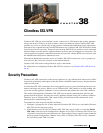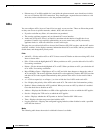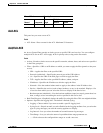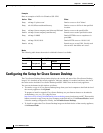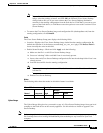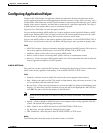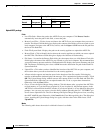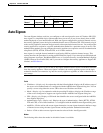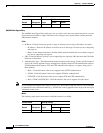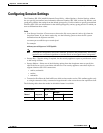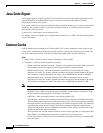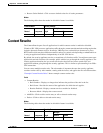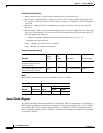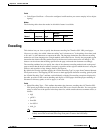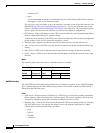
38-9
Cisco ASDM User Guide
OL-16647-01
Chapter 38 Clientless SSL VPN
Auto Signon
Auto Signon
The Auto Signon window or tab lets you configure or edit auto signon for users of Clientless SSL VPN.
Auto signon is a simplified single signon method that you can use if you do not already have an SSO
method deployed on your internal network. With auto signon configured for particular internal servers,
the security appliance passes the login credentials that the user of Clientless SSL VPN entered to log in
to the security appliance (username and password) to those particular internal servers. You configure the
security appliance to respond to a specific authentication method for a particular range of servers. The
authentication methods you can configure the security appliance to respond to consists of authentication
using Basic (HTTP), NTLM, FTP and CIFS, or all of these methods.
Auto signon is a straight-forward method for configuring SSO for particular internal servers. This
section describes the procedure for setting up SSO with auto signon. If you already have SSO deployed
using Computer Associates’ SiteMinder SSO server, or if you have Security Assertion Markup Language
(SAML) Browser Post Profile SSO, and if you want to configure the security appliance to support this
solution, see SSO Servers.
Note Do not enable auto signon for servers that do not require authentication or that use credentials different
from the security appliance. When auto signon is enabled, the security appliance passes on the login
credentials that the user entered to log into the security appliance regardless of what credentials are in
user storage.
Fields
• IP Address—Display only. In conjunction with the following Mask, displays the IP address range of
the servers to be authenticated to as configured with the Add/Edit Auto Signon dialog box. You can
specify a server using either the server URI or the server IP address and mask.
• Mask—Display only. In conjunction with the preceding IP Address, displays the IP address range
of the servers configured to support auto signon with the Add/Edit Auto Signon dialog box.
• URI—Display only. Displays a URI mask that identifies the servers configured with the Add/Edit
Auto Signon dialog box.
• Authentication Type—Display only. Displays the type of authentication—Basic (HTTP), NTLM,
FTP and CIFS, or all of these methods—as configured with the Add/Edit Auto Signon dialog box.
• Add/Edit—Click to add or edit an auto signon instruction. An auto signon instruction defines a range
of internal servers using the auto signon feature and the particular authentication method.
• Delete—Click to delete an auto signon instruction selected in the Auto Signon table.
Modes
The following table shows the modes in which this feature is available:
Firewall Mode Security Context
Routed Transparent Single
Multiple
Context System
• — • ——



